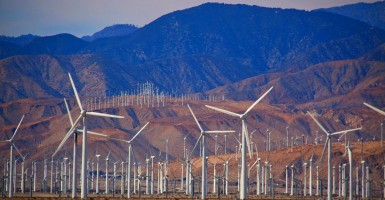The Senate is attempting to move forward with allegedly non-controversial legislation, the Energy Policy Modernization Act of 2015, which, according to proponents, contains no “poison pills.”
But for anyone who wants to swallow a strong dose of government intervention and anti-market energy policy, this bill is chock-full of poison pills.
Like the last two major energy bills passed in 2005 and 2007, a few good provisions do not outweigh the abundance of bad policies that waste taxpayer dollars, restrict energy choice and distort markets.
Reforming old laws and breaking down government-imposed barriers to make energy markets more innovative and competitive takes energy policy in the right direction, but the Energy Policy Modernization Act largely perpetuates the status quo of the government thinking it knows best, by picking winners and losers.
The legislation provides taxpayer-funded subsidies generating renewable energy and efficiency retrofits at schools and at non-profit organizations, and for improving energy efficiency for state and tribal buildings.
Not only are these programs duplicative of state efforts, but they are also wasteful and distort the choices that families, businesses, schools, and state and local governments can make on their own.
American families and businesses have many different needs. A one-size-fits-all regulation or subsidy to artificially elevate the importance of energy efficiency is not only wasting taxpayer dollars, but skewing consumer preferences and the market at large.
Businesses and families make energy-saving investments when it makes sense for them to do so, and as a result, energy use per dollar of Gross Domestic Product has fallen dramatically.
The paternalistic view of federal intervention in energy efficiency ignores the trade-offs, budget constraints and payback periods that families and investors face, as well as the preferences they hold.
Similarly, politicians should not think that if they play puppet master using taxpayer dollars, the market pieces will fall into place.
The Energy Policy Modernization Act contains an array of programs such as:
- Taxpayer money to train the next generation of workers
- Grant money for projects eligible for electricity grid modernization
- Government-provided incentives for hydroelectric production
- Research demonstration projects for geothermal energy and hydrokinetic energy
- Expands authority for government money for biopower and bioheat systems
- A low-interest loan program for industrial bioheat systems
- Amends and reauthorizes a program to make methane hydrates a commercially viable source of energy
- Recycling critical minerals
- Promotes commercialization of carbon capture and sequestration as an objective of the Department of Energy’s Office of Fossil Energy
These programs perpetuate the same, tired thinking in Washington that the market works like baking a cake.
If you sprinkle a few government programs here, some taxpayer-provided incentives there, and add in handouts for jobs training programs, you’ll have a viable new product that generates wealth and opportunity when all is said and done.
And politicians get to say: we built that, which certainly doesn’t hurt come election time.
Not only is this not the role of government and an ill-informed idea of what drives growth and prosperity, but the government-can-make-markets line of thinking backfires, wasting taxpayer money and trapping labor and capital in unproductive places, driving up prices.
Government programs that promote specific technologies or attempt to drive investment distort the market by dictating where investments flow, taking labor and capital away from potentially more promising endeavors.
At best, the programs may provide some subsidized production and jobs, which politicians can point to as a positive, but it is not the recipe for a sustainable industry and a thriving economy.
Nor does it show how those resources could have been more productive in other sectors of the economy.
The Energy Policy Modernization Act of 2015 would be an extension of everything that’s wrong with energy policy in the United States because it continues the mindset of government intervention over the energy economy.
To increase energy production, create jobs and grow the economy, Congress should pass reforms that open access to markets, eliminate favoritism for any energy sources and create a regulatory pathway that allows innovative, competitive technologies to flourish, many of which already have bipartisan support.


























